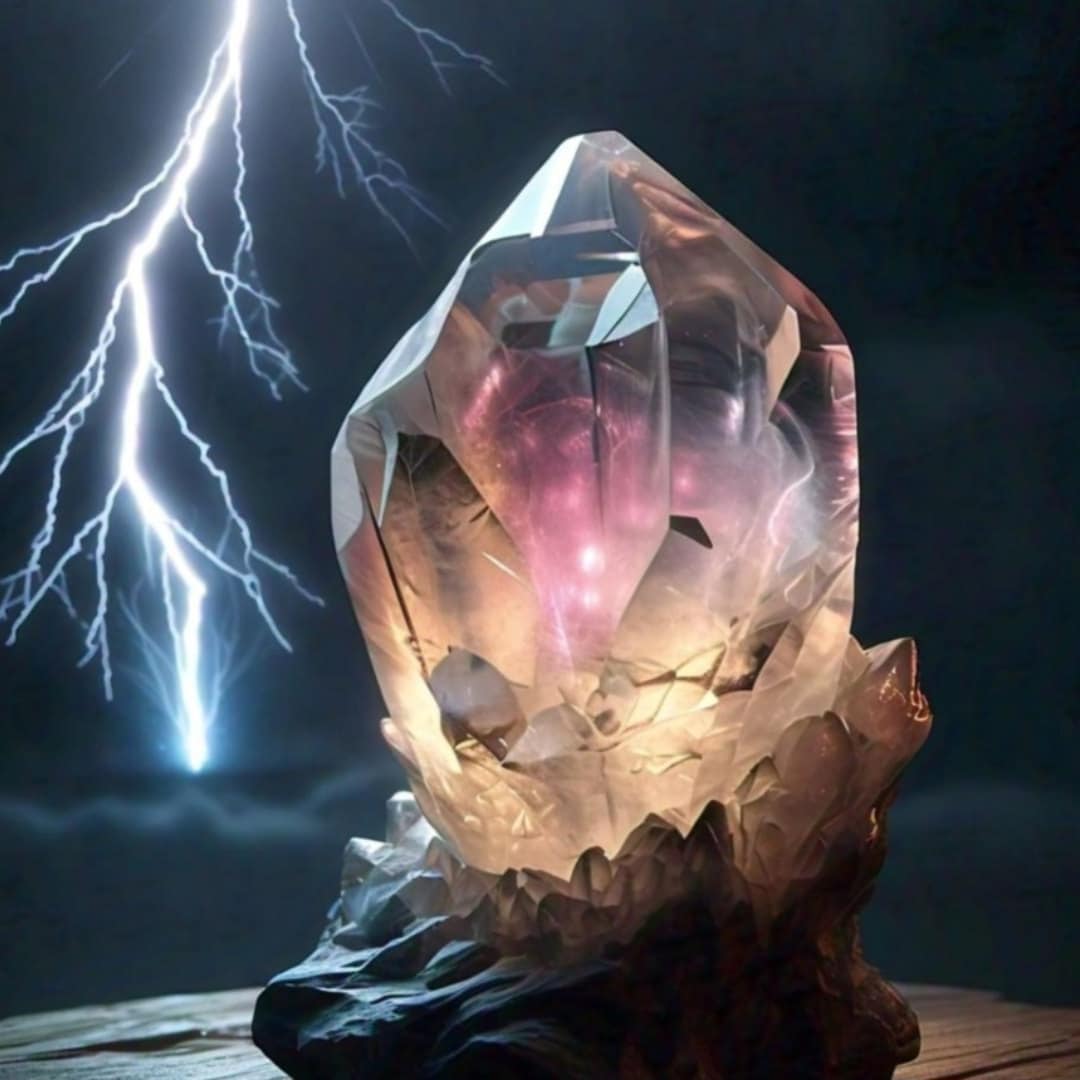
Lightning strike crystals, often shrouded in mystery and folklore, have captured the imagination of many for centuries. These enigmatic formations, purportedly born from the intense energy of lightning strikes, have sparked both scientific curiosity and mythical tales. In this blog, we delve into the truth behind lightning strike crystals, exploring the scientific explanations and debunking the myths surrounding them. Let's embark on a journey to uncover the secrets of these fascinating natural phenomena.
The Science Behind Lightning Strike Crystals:
To understand lightning strike crystals, we must first grasp the basics of lightning formation. Lightning occurs when electrical charges build up in clouds, resulting in a discharge of electricity between the cloud and the ground, or between different parts of the same cloud. This discharge generates immense heat and energy, reaching temperatures hotter than the surface of the sun and causing the surrounding air to expand rapidly, creating shockwaves that we hear as thunder.
When lightning strikes the Earth, it can interact with various materials, including sand, soil, rocks, and even living organisms. One of the most intriguing outcomes of such interactions is the formation of lightning strike crystals. These crystals are typically composed of minerals found in the Earth's crust, such as quartz, feldspar, and other silicates.
During a lightning strike, the intense heat and energy can melt or vaporize the surrounding material, leading to the rapid cooling and solidification of certain minerals. This rapid cooling process can sometimes result in the formation of unique crystal structures, known as fulgurites. Fulgurites are often hollow tubes or branching formations, created when lightning fuses together grains of sand or other minerals.
Research into Lightning Strike Crystals:
Numerous scientific studies have examined the formation and properties of lightning strike crystals, shedding light on their fascinating characteristics. One such study, presented at the annual meeting of the Geological Society of America, investigated lightning strikes to quartz-rich substrates.
The research focused on understanding the geological implications of lightning strike events on quartz formations. Quartz, a common mineral found in the Earth's crust, possesses unique properties that make it particularly interesting for studying the effects of lightning strikes. When lightning interacts with quartz-rich substrates, it can produce distinctive features and alterations in the mineral structure.
The findings of this study revealed several intriguing aspects of lightning strike events involving quartz. Firstly, the researchers observed distinct morphological changes in the quartz crystals following a lightning strike. These changes included alterations in crystal shape, size, and orientation, providing valuable insights into the dynamic processes occurring during such high-energy events.
Furthermore, the research highlighted the role of temperature and pressure gradients in shaping the response of quartz to lightning strikes. The extreme heat generated by lightning can lead to localized melting and recrystallization of quartz grains, resulting in the formation of unique crystal structures and textures. Additionally, the rapid cooling that follows the discharge can induce stress and strain within the quartz matrix, leading to the development of fracture networks and other deformation features.
By combining field observations with laboratory analyses, the researchers were able to reconstruct the sequence of events associated with lightning strikes to quartz-rich substrates. This interdisciplinary approach provided a comprehensive understanding of the geological processes involved and contributed to the broader body of knowledge on fulgurite formation and lightning-induced mineral alterations.
Debunking Myths Surrounding Lightning Strike Crystals:
While lightning strike crystals have captured the imagination of storytellers and mythmakers throughout history, it's essential to separate fact from fiction. One common myth is that lightning strike crystals possess mystical powers or supernatural properties. While these formations are undoubtedly fascinating, there's no scientific evidence to support claims of mystical significance.
Additionally, some myths suggest they are rare or valuable collectibles. While it's true that fulgurites are relatively uncommon compared to other mineral formations, these crystals are not inherently valuable in a commercial sense. Their worth lies more in their scientific and aesthetic appeal rather than any monetary value.
Lightning strike crystals are not exclusive to remote or exotic locations. While certain regions may have a higher frequency of lightning strikes, fulgurites can potentially be found anywhere lightning has struck the Earth's surface, including beaches, deserts, and even urban areas.
Although steeped in myth and legend, these crystals are ultimately the product of natural processes rooted in physics and geology. While their formation may seem miraculous, it's a testament to the incredible power of lightning and the Earth's resilience. By exploring the scientific explanations behind these formations and debunking the myths surrounding them, we gain a deeper understanding of the natural world and the awe-inspiring forces that shape it. So, the next time you come across a lightning strike crystal, remember the fascinating story behind its creation, grounded in science and illuminated by curiosity.
Next blog post: Trade Names for Crystals and Minerals: Unveiling the Mysteries (rocksity.com)
All information presented in this blog post is the intellectual property of the author. No part of this content may be reproduced, distributed, or transmitted in any form or by any means without the express permission of the author. Unauthorized use of the content is strictly prohibited and may result in legal action. Please contact the author for permission to use any material from this blog post.
#lightningstrikecrystals

